

Tin Roofs
by Bill Kibbel
Tin is only one type of metal roofing system. Sheet metal, lead, copper, zinc, tin plate, terne plate, and galvanized iron have all been used as roofing materials.
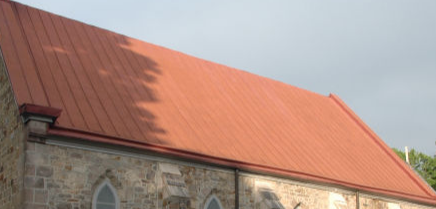
The original metal roofing material produced in this US was sheet iron, first used at the end of the 18th century. Rolling mills produced large sheets that required fewer seams than later plated materials. Iron must be painted to prevent rust.
Lead sheet, more often used for flashings and lining wood gutters, was only briefly used for roof coverings. While lead doesn't rust, it never gained widespread use for two reasons. Expansion and contraction caused small tears in the lead, and when warm, the soft metal would creep down steeply pitched roofs.
Tin used in roofing is actually tin plated iron. It was one of the most common metal roofing materials used throughout the 19th century. Terne, an alloy of lead and tin, was also used as a plating material. Tin plate is bright and shiny when first installed, while terne has a duller appearance. Any iron-based roofing material needs to be painted to guard against corrosion. The protective plating eventually wears away or is damaged, leaving the iron beneath vulnerable to rust.
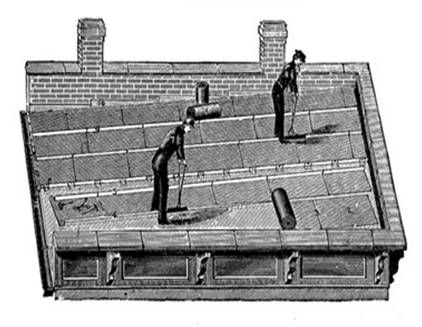
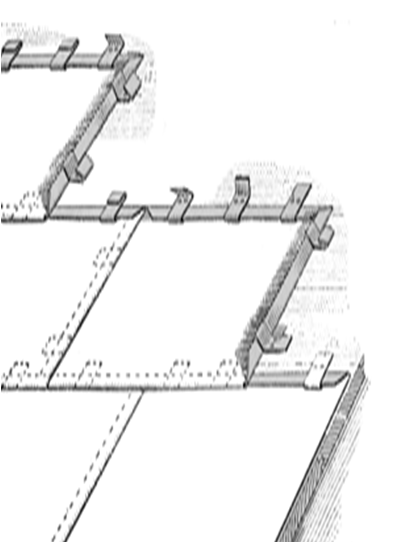
If your roof has been maintained regularly, it still needs to be protected from corrosion. Traditional linseed oil paint was the only available product to protect the metal until the latter part of the 20th century. The linseed oil was tinted by grinding in earth pigments, with iron oxide (red) being the most common.
These old metal roof systems can last for a century or much more, if they have been propoerly maintained. Peeling paint and small areas of minor surface rust can be easily addressed without expensive products or specialisty contractors. More extensive problems with metal roofs often can be repaired to avoid complete replacement.

The biggest challenge may be finding a roofer with the equipment, skills and knowledge to correctly repair and maintain these historic roofs. I often see roofing cement slopped into valleys, onto chimney flashings and plumbing vent penetrations on metal roofs. This roofing goop is an unsightly and temporary fix for a problem that should be repaired properly and permanently.

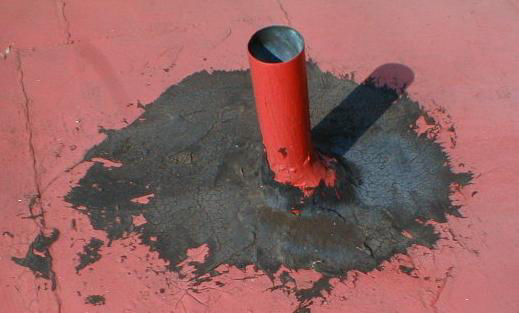
Traditional linseed oil paint was most often used to protect most metal roof systems until about the mid 20th century. The oil was tinted by grinding in earth pigments, with iron oxide (red) being the most common. It's very scarce today and the brand I've always used is no longer produced (VOC concerns).
More recently, other not-so-appealing coating systems have been more popular. These are mostly asphalt based, some having added fibers for strength and some have aluminum added. These black and silver coatings may work, but aren't the most appropriate look when applied to roofs on historically significant buildings.
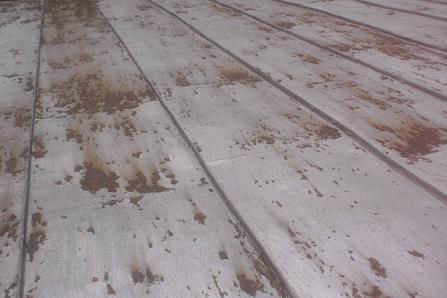
Another option is to apply an acrylic coating system that is specifically manufactured for restoring and maintaining historic metal rooofs. For preserving a roof in good to fair condition, typically two coats are applied. When the coats cure, the system becomes a flexible, seamless membrane. The coatings are available in the common colors of the old oil paints. A refresher coat might be needed every decade after.
At flashings, tar patches and spots of more severe corrosion, a reinforcing polyester fabric can be embedded into the coating when wet , then topped with additional coats. For roofs in poor condition or coated with tar, a full polyester reinforced system can be applied.
When this coating is applied properly, the historic metal roof is restored and preserved with virtually the same appearance as those treated with the old linseed oil and pigment paint.
Visit: preservationproducts.com/roofing-systems (author not affiliated or compensated)

Bill Kibbel is a consultant and an inspector of historic homes
& commercial buildings at Heritage Building Inspections.
Mobirise page maker - More here